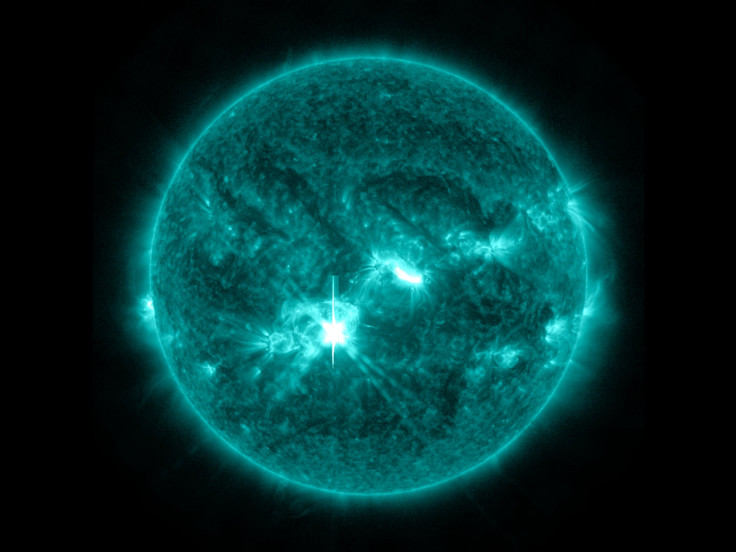NASA Captures An 'X-Class' Solar Flare, Event Causes A Temporary Radio Blackout
The sun emitted an intense solar flare in the early hours of Friday. The "X-class" solar flare is the most intense class of flares, and NASA expects to see plenty of activity as the sun reaches solar maximum.

Solar maximum is the normal peak of solar activity during the sun's 11-year cycle. At 4:01 a.m. EDT on Friday, NASA's Solar Dynamics Observatory, SDO, observed an X1.7 class solar flare. According to NASA, the intensity scale of X-class flares starts at X1; an X2-class flare is double the strength of an X1 and an X3 solar flare is triple the intensity of an X1. During the current solar cycle, researchers observed an X6.9 solar flare on Aug. 9, 2011.
An X-class solar flare as well as a coronal mass ejection, CME, won't affect humans on Earth as the particles cannot penetrate the planet's atmosphere, but these intense solar events can cause radio and satellite blackouts. Such was the case with Friday's solar flare.
The National Oceanic and Atmospheric Administration's Space Weather Prediction Center recorded a strong blackout as a result of the solar flare. According to the report, "A spot group just on the visible disk, dubbed Region 1882, generated an impulsive R3 (Strong) Radio Blackout at 0801 UTC (4:01 a.m. EDT) on October 25." An R3 radio blackout is typically associated with X1 solar flares and affects a wide area of high-frequency radio communication on the sunlit side of Earth for around an hour while low-frequency navigation signals are impaired for around an hour.
The highest level of radio blackout is an R5, associated with X20 or higher solar flares, which can cause a total radio and navigational signal blackout for several hours. The largest solar flare ever recorded was an X45 on Nov. 4, 2003. NOAA is waiting for the images of the latest solar flare to determine if a CME was associated with it.

On Wednesday, a weaker solar flare, an M9.4-class, was observed by SDO. A CME was associated with this solar flare and NOAA is currently evaluating the possibility of G1 (minor) geomagnetic storming. A G1 geomagnetic storm could lead to some fluctuations in the power grid and cause aurorae in higher altitudes, such as Maine or Michigan, according to NOAA. There have been no reported geomagnetic storms or solar radiation storms associated with the two solar flares.
© Copyright IBTimes 2024. All rights reserved.






















